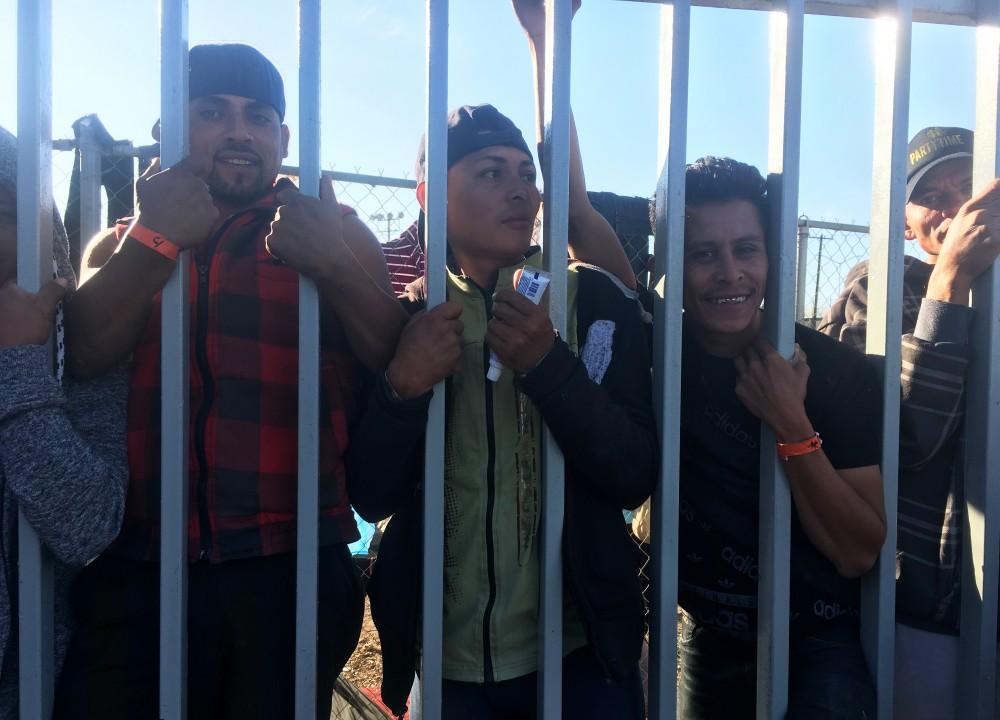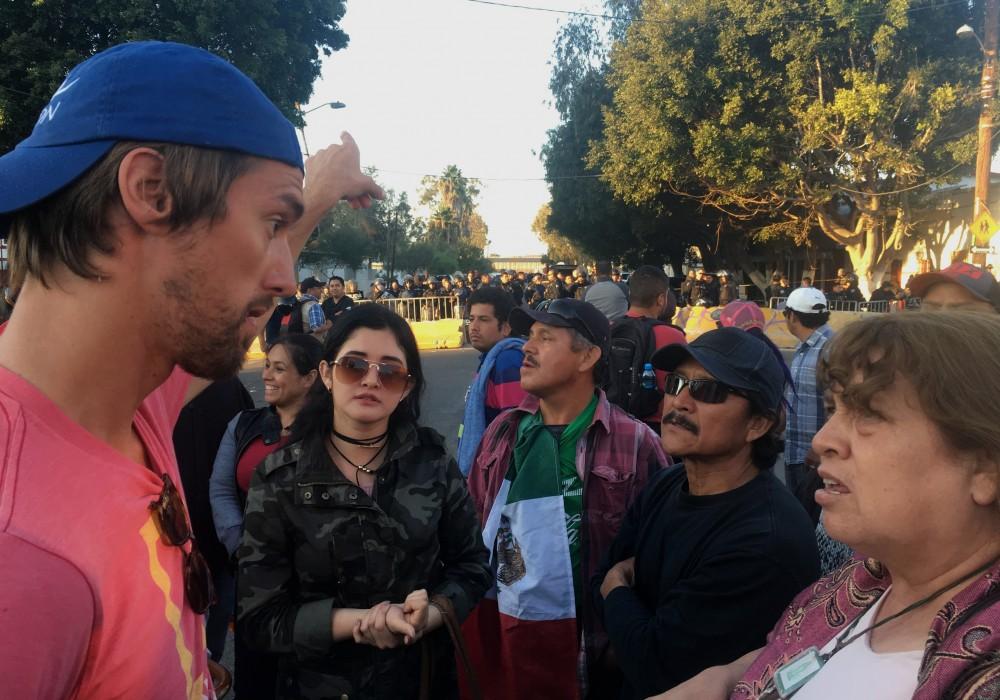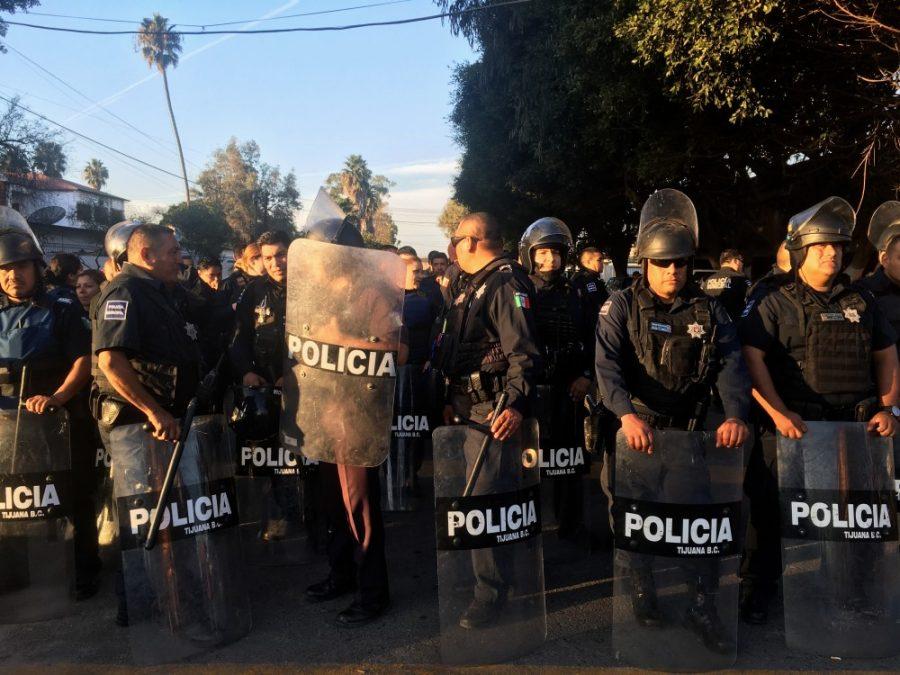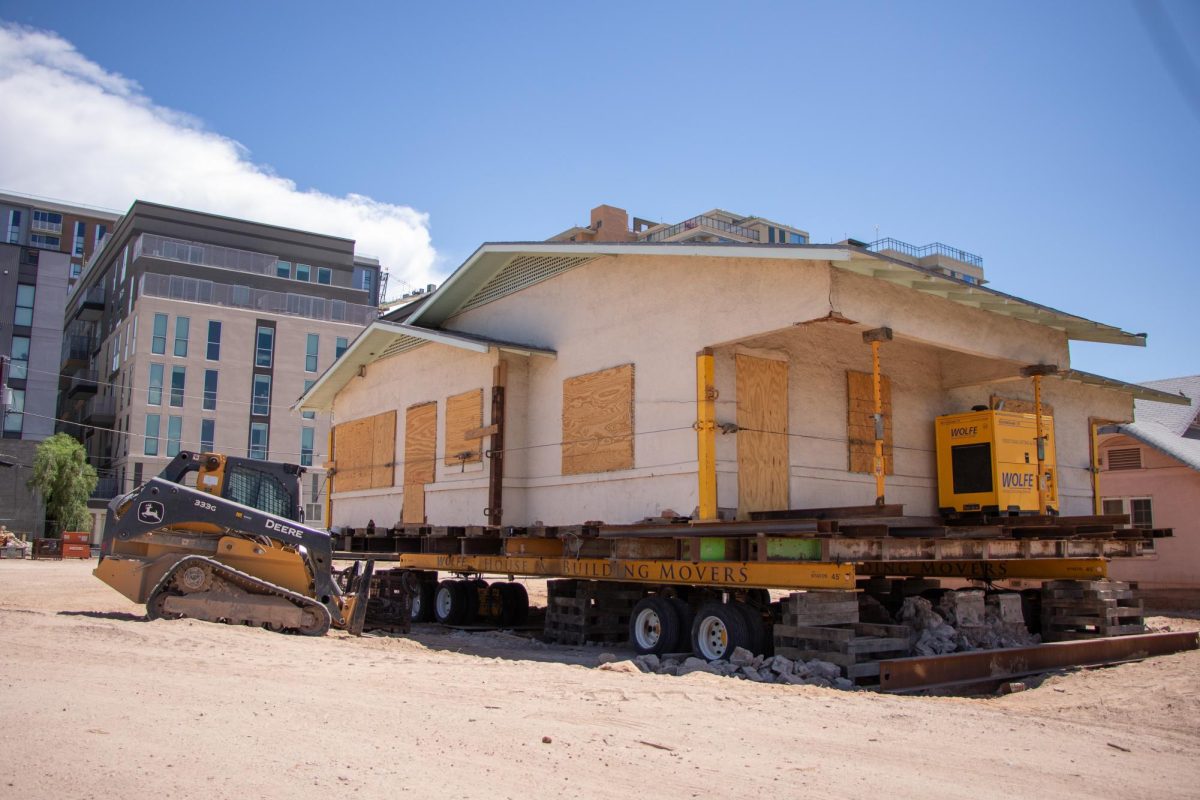On Sunday, the United States temporarily closed the border crossing between San Diego, California, and Tijuana, Mexico. In what President Trump called an invasion, over 5,000 immigrants are living in makeshift tents in just a couple miles south of the border. For two weeks, groups of a migrant caravan from Honduras have been arriving in Tijuana heading to the U.S.
On Friday, the mayor of Tijuana declared a humanitarian crisis, appealing to the United Nations for help. The migrants’ stay in the city looks to be indefinite, resources are running low, and tensions are high. Almost daily, protesters have filled the streets surrounding Deportiva Benito Juarez, the sports complex converted into a temporary shelter for the migrants, echoing sentiments similar to Trump’s: the migrant caravan is a dangerous invasion and the Mexican government should help Mexicans first. After the first night, when violence erupted between protesters and caravan members, the Tijuana police took to barricading the block surrounding the shelter.
RELATED: OPINION: Who is in the migrant caravan? People. People are.
One policeman comprising the blockade, Eduardo Volverde, said the protesters fear that the Hondurans won’t be granted entry into the U.S. and will stay in Tijuana indefinitely. “They think they are all delinquents, that they are going to cause problems in the city,” said Volvere, as he stood between protesters and migrants. “Many came and the city is not prepared to have so many people.”

The Tijuana Police have taken the situation largely into their hands. To pass the police barricade, one needs an orange wristband signaling they’ve been granted access or are part of the caravan. Others must first fill out forms stating their purpose and wait for approval, according to volunteers. Inside the blockade, in the streets just surrounding the sports complex, a couple hundred migrants mill around amidst a heavy police and journalist presence.
Kyle Samuels, a U.S. veteran who has been traveling with the caravan since Mexico City, passed out sandwiches near the entrance of the complex. Men, women and children formed a tight circle around him, hands outstretched. Some asked for an extra sandwich to bring to their family locked inside, a measure the police have been taking in the name of protecting the migrants. As the food quickly ran out, many hands were left empty.
Two blocks away, a group rallied against the protesters in support of the caravan. “They walked 8,000 miles, now they’re here. People from outside of the city, they came here, and they want to kick them out,” said Rene Vazquez, a Tijuana resident. “Not us. The locals here, we are with the poor people, ok?” Vazquez and his friends were waiting for the protesters to clear out so they could bring food to the migrants. He said most of the anti-caravaners didn’t live in the city but had come from towns like Rosarito, 20 kilometers away.
Though the protests have reached a crescendo in Tijuana, they are not the first the caravan has faced since departing San Pedro Sula, Honduras, two months ago. “It’s the same as in every other country we’ve passed,” said Riena Isabel Sagastume, a 30 year old Honduran woman who joined the caravan near Santa Bárbara. “There’s good people, but there’s also bad people that aren’t welcoming with us. Sometimes they make a mess here and insult us, tell us that they don’t want us here,” she said.
Much of the rhetoric against the migrants seems to come straight from the Trump administration’s campaign against them. In the weeks before the Nov. 6 midterm elections, Trump’s team launched a media attack on the caravan in what some see as an election strategy for Republicans. Via his Twitter page, the president used the migrants to bash Democrats with tweets such as, “blame the Democrats for not giving us the votes to change our pathetic Immigration Laws! Remember the Midterms!”
Through other tweets, speeches and commercials, Trump’s team has portrayed the caravan as a dangerous invasion, putting pressure on the Mexican government not to let them reach the U.S.. “It was a show for Trump’s political base,” said Juan-Carlos Barrón Pastor, a head researcher at the Center for Investigations of North America based in Mexico City. Although Mexico tends to have cultural sympathy for immigrants, Barrón said, the negative migrant representation in the U.S. is reflected in the country; many Mexicans are adopting an anti-immigration stance. “It has reproduced the same reaction,” he said, “of ‘no, we don’t want migrants, they will take our jobs.”

When the caravan crossed from Guatemala into Mexico, clashing with police at the border, one Honduran man was killed, and many more injured. The Mexican police, being filmed live by media channels from around the world, then stood down. “Sadly, it looks like Mexico’s Police and Military are unable to stop the Caravan heading to the Southern Border of the United States,” Trump tweeted in response. “Criminals and unknown Middle Easterners are mixed in. I have alerted Border Patrol and Military that this is a National Emergency.”
So far, almost 6,000 U.S. troops have been deployed to the border, whom the White House has approved to use lethal force. Samuels said he felt bad for these military personnel and called their deployment a cowardly over-use of force. “They’re trying to serve and protect the country and what they’re being asked to do is technically border security.” Trump is trying to portray it as an invasion, he said, but it’s just fear-mongering.
“The president of the U.S. says that we are criminals, but we’re not all criminals, there’s also good people, hardworking people, and it’s not fair that for some bad people everybody pays the price,” Sagastume said. Most in the caravan are fleeing either extreme poverty or gang violence; Sagastume left her town in Honduras after the gang MS-13 approached her while she was working, selling phones and perfumes on the street.
“When they saw me selling, they told me I had to sell drugs with them or they would kill me,” she said, as well as “be their woman.” Choosing to leave her children with her mother and husband rather than subject them to the dangers of the voyage, Sagastume left alone. “I’m afraid of returning to Honduras. If I return and don’t sell drugs, they will kill me.” On her phone, she keeps photos of all the women found dead in her town, murdered by MS-13.
Her friend, Angela Yamilet from Olancho, Honduras, made the trip to Tijuana with her husband and three children. They left their town because there was no work, they couldn’t afford a place to live or education for their children. For her, Tijuana has been the best part of the trip despite the protests. “It’s better than anything I’ve had,” she said, “I’d like to stay and work here for a while.”
RELATED: Celebrations, protest at UA partner school in Mexico mark remembrance of ’68 massacre
While officials in Mexico and the U.S. grapple with short-term solutions, the cause of migration remains largely unaddressed. “When you don’t have opportunities in your own country, you look for them in other countries,” Volverde said. Honduras, once labeled the murder capital of the world, had poverty rate of 66 percent last year, according to the World Bank. In a 2015 U.S. State Department Investment Climate report, problematic foreign investment and trade was cited as a cause of poverty. The U.S. owns and controls more than 200 companies in Honduras and has been its largest trading and economic partner.
For many of the thousands stalemated in Tijuana, returning to their homes is not an option. While violence, poverty and exploitation rule their countries, deporting them would be akin to sweeping a dirt floor; more will continue to seek better lives in the U.S., walking thousands of miles, hitching rides in livestock trucks and relying on the humanity of strangers.
“This road is very difficult. Some have died, and also children,” Sagastume said. “A lot has happened, a lot of pain we’ve suffered on our way, but we’ve continued.”
On Nov 25, U.S. forces shot tear gas into a group of migrant protesters who were walking towards the border fence, several of whom were reportedly attempting to breach it. Women and children were in the group under fire, and 500 are now facing deportation, accused of attempting to enter the U.S. illegally and violently.
Interviews were translated by Leonel Morales, a student at UA-partner school UNAM.
Sasha Hartzell is a UA student currently living in Mexico. This is her account of the migrant caravan’s passage through Northern Mexico.














